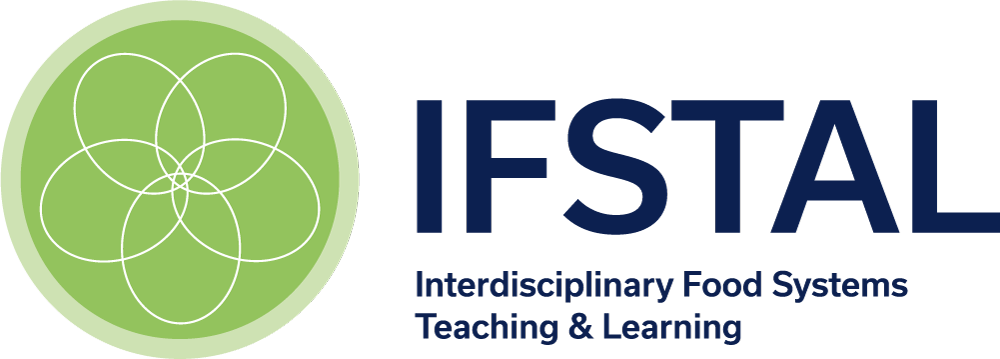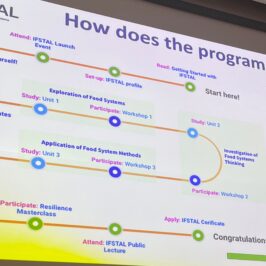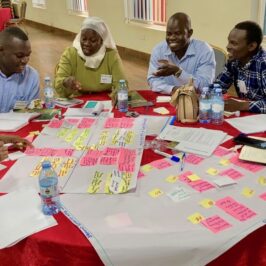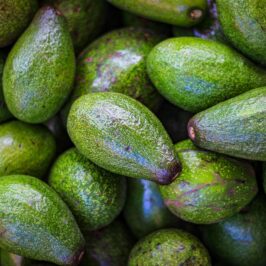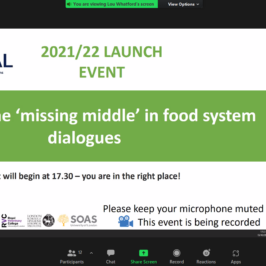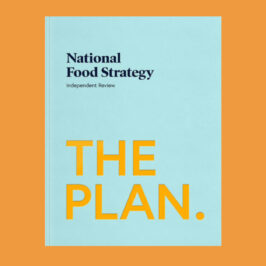Group 1
We drove to Sheepdrove Organic Farm (http://www.sheepdrove.com) in Berkshire near the village of Lambourn where we were welcomed warmly by owner Peter Kindersley. The farm is situated on 2300 acres of chalk downland in a landscape recognised as outstanding natural beauty and combines mixed farming with conservation and biodiversity efforts. They also own Sheepdrove butchers and Neal’s Yard Remedies organic skin and body care and natural remedies. Peter, who is a passionate campaigner for environmental sustainability, biodiversity and ecological issues gave an inspiring presentation in the farm’s conference centre. In his opening slides he pointed out his frustration with the Health and Harmony report produced by Defra that fails to make any mention of organic farming and observed that it was bizarre that a report talking about environment would not consider organic farming.
Peter took us on a worrying journey of a world facing biodiversity loss, exposure to long-term, sub-toxicity doses of toxins and chemicals and associated non-communicable health challenges (e.g. cancer, autism), loss in crop quality, antibiotic resistance, insufficient animal welfare, and soil degradation. The central message of his talk was that as society we are poisoning ourselves and that using toxic cocktails ending up in our food is a serious cause of disease that will keep the NHS going for some time. He questioned existing studies on the safety of pesticides and other chemicals and asked critical questions about beneficiaries of the current system and the impartial nature of research. Is the food system a world of greed, corruption and conspiracy? During question time, the diverse nature of the IFSTAL group once again came to light – questions were asked on air pollution, Brexit, cheap grains for animal feed, GMO, supermarket-farmer relations, land use in organic production, the use of insects as feed or food. After this stimulating discussion, we were taken on a tour of the farm to see their extensively reared livestock (sheep and beef in fields; pigs in forest); the Reedbed Water Treatment System that cleans and recycles waste water from the farm, conference centre, processing unit and houses; habitats to support farmland biodiversity and attract insects, butterflies, birds, and bats. The farm has records of 25 species of butterfly, 10 species of bee, 6 species of bat and 104 species of bird (including 5 types of owl) and a huge variety of plant. After lunch in their beautiful herb and flower garden, we made our way to way Leatherhead.
Leatherhead Food Research (https://www.leatherheadfood.com/) is a research centre that provides expertise and support to the global food and beverage sector. Chris Wells, managing director, gave us an overview of what the company does – ground breaking research in the science of food in partnership with the food industry and government. They like solving complex problems and work on practical solutions that cover all stages of a product’s life cycle from consumer preferences, ingredient research and innovation to sensory testing, food safety and global regulatory consultancy. Felicia Frances, regulatory analyst, then presented more details of their work highlighting the challenges around the minefield of hugely diverse regulations across the world – the product “chocolate” in Australia is not the same as “chocolate” in the UK or “chocolate” in Tanzania; in other words, each country has a different set of regulations that need to be considered in global trade. She then talked about technology in food preservation (e.g. freezing of fish) and food safety (e.g. detection of foreign bodies in food), and gave us an overview of novel developments in consumer research facilitated by smart devices. Using the example of biscuits, Felicia and Chris explained the challenges of having to replace a critical ingredient – sugar – in such products. Apart from sweetener properties, sugar for example modifies several properties, including the spread of the batter on baking, crunchiness and flavour, due to the way it interacts with other ingredients. Important challenges arise when trying to remove or reduce sugar in terms of flavour, consistency, size and nutrient composition.
During the tour of Leatherhead’s laboratories, we saw facilities where sensory specialist panels test and describe the sensory properties of foods, where consumers taste and rate a variety of products, where focus group discussions are held, where a variety of foods are cooked to check cooking instructions, and where food safety tests are conducted for a range of potential pathogens like salmonella.
The visit showed that there are many critical inputs and uses in the food industry that were introduced for their functional properties (e.g. packaging with the ability that allows freezing a ready meal and later on cook it in an oven at very high temperatures) that are now under pressure due to changes in priorities (such as the push to remove plastic packaging) thereby creating a demand for scientific solutions for complex problems – exactly what Leatherhead researchers like to do.
Group 2
If you have had a gluten-free pizza recently, or have sought allergen-free breakfast cereal, the chances are the flour would have come from Doves Farm Foods. This was the first stop for those of us in ‘Group 2’ of the IFSTAL Summer School field trip yesterday. First up was a glorious farm walk led by Dove Farm Foods Director, Michael Marriage. The 350 acres farm has been organic since 1978 and is well known for its interesting mix of cereals including wheat, spelt, rye and even einkorn (the earliest type of farmed wheat). Fertility is maintained by managing the land as a 6 year rotation, 3 of grass/cover which provides 3-years grazing for 350 sheep, followed by annual crops of wheat, then spelt then rye. These crops are successively less demanding of the nitrogen supply. A range of agrienvironment schemes are employed, including a ‘beetle bank’ (3 m wide strips of rough grass running around several fields), an area of wild bird seed mix, and a 1 acre plot for lapwing cover. The farm generally makes a small profit, but some years only breaking even, but only due to the CAP payments. The future of both these and the agrienvironment scheme grants are of course very much in question post-Brexit…
Then back to the main buildings where the major aspect of the enterprise is the milling and marketing of various flours through a range of retailers big and small. This £19m per year enterprise buys in more organic grain from other farmers and produces a wide range of flours and related products include breakfast cereals and grain bars. Organic products typically sell at about 20% more than non-organic. Gluten-free requires < 20ppm, so the gluten-free processing line has to be completely separate from the regular line, and is rigorously checked to ensure no contamination. This make it more expensive but as the market is growing, scaling up will reduce price. They have established a “Freee” brand. They are also providing an allergen-free range of products, which are free of 13 known allergenic material.
Following a picnic lunch stop beside the River Avon, we headed north to Didcot. Famed for the massive (but now decommissioned) coal-fired power-station (and for those still harking back to the age of steam, the Railway Centre), it is also home of SOFEA – the erstwhile called South Oxfordshire Food & Education Academy. This is a wonderful combination of closely-related missions: to work with young people to build their employability, whilst providing nutritious food for those in need.
Director Richard Kennell led us through the warehouse where local supermarkets deliver ‘surplus’ food: pallets groaning with fresh fruit and veg, breakfast cereals and other dry goods, and hundreds of jars of pickle which for some reason had no labels, to name but a few. Incoming items are listed on their ordering website. About 130 local charities across the town, wider community and the wider Thames Valley region, which provide meals for disadvantaged people, OAP lunch clubs, etc then place an order from what’s available for their needs that day. SOFEA then delivers to their door. Each pays a membership fee £1000, £2000 or £3000 a year to receive up to 50, 50-100, or over 100 kg food/week: extraordinarily good value! SOFEA also benefits from a number of grants and local philanthropy.
But the really wonderful feature is how this model for redirecting what would otherwise be food waste to good causes also provides the main context for practical work skills: SOFEA delivers an education and training programme for local people disadvantaged in the labour market. Through a holistic education and training programme for local people disadvantaged in the labour market, SOFEA provides experience in logistics and management control; teaching in key GCSE subjects to help young people re-engage with more formal education to gain qualifications; and therapy to help change mind-set.
By good chance, the national-level FareShare food group was meeting on site, so we were also able to have a half hour with them. Set up in 1996 by Crisis, FareShare distributes ‘surplus’ food to 7000 charities. Discussion covered they use of ‘surplus’ rather than waste (it is less ‘damming’ for suppliers); the nutritional quality (should they be offering obesogenic foods?: Yes because sometimes a coffee and sticky bun for a homeless person late at night is more welcome than a salad); how they differ from campaigning organisations (but they work closely with WRAP); and their aim for kid-friendly food (ie small apples) to offer during the school holidays when free school meals are not available.
Both visits were very informative on different food system aspects – and hugely thought-provoking. While the morning was about supplying niche products to better-off consumers, and the afternoon was arguably about the opposite, it was very clear that of both these enterprises are providing valuable functions to society. Their success is very much due to the vision and passion of their Directors; their ability to have seen an opportunity, and to stick with their values.
